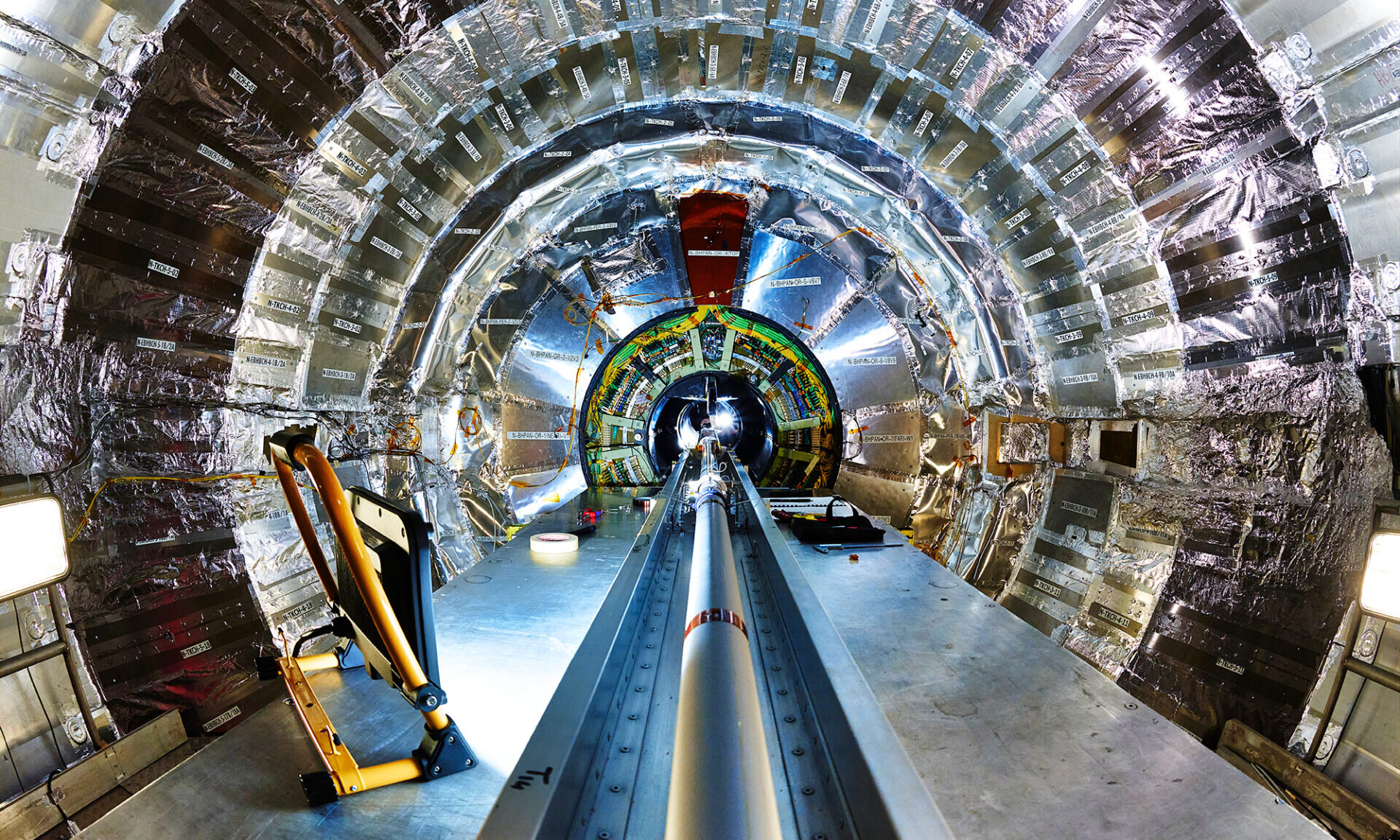× close
An experiment by a group of physicists led by University of Rochester physics professor Regina Demina has produced a significant result related to quantum entanglement—an effect that Albert Einstein called “spooky action at a distance.”
Entanglement concerns the coordinated behavior of miniscule particles that have interacted but then moved apart. Measuring properties—like position or momentum or spin—of one of the separated pair of particles instantaneously changes the results of the other particle, no matter how far the second particle has drifted from its twin. In effect, the state of one entangled particle, or qubit, is inseparable from the other.
Quantum entanglement has been observed between stable particles, such as photons or electrons.
But Demina and her group broke new ground in that they found, for the first time, entanglement to persist between unstable top quarks and their antimatter partners at distances farther than what can be covered by information transferred at the speed of light. Specifically, the researchers observed spin correlation between the particles.
Hence, the particles demonstrated what Einstein described as “spooky action at a distance.”
A ‘new avenue’ for quantum exploration
The finding was reported by the Compact Muon Solenoid (CMS) Collaboration at the European Center for Nuclear Research, or CERN, where the experiment was conducted.
“Confirming the quantum entanglement between the heaviest fundamental particles, the top quarks, has opened up a new avenue to explore the quantum nature of our world at energies far beyond what is accessible,” the report read.
CERN, located near Geneva, Switzerland, is the world’s largest particle physics laboratory. Production of top quarks requires very high energies accessible at the Large Hadron Collider (LHC), which enables scientists to send high-energy particles spinning around a 17-mile underground track at close to the speed of light.
The phenomenon of entanglement has become the foundation of a burgeoning field of quantum information science that has broad implications in areas like cryptography and quantum computing.
Top quarks, each as heavy as an atom of gold, can only be produced at colliders, such as LHC, and thus are unlikely to be used to build a quantum computer. But studies like those conducted by Demina and her group can shed light on how long entanglement persists, whether it is passed on to the particles’ “daughters” or decay products, and what, if anything, ultimately breaks the entanglement.
Theorists believe that the universe was in an entangled state after its initial fast expansion stage. The new result observed by Demina and her researchers could help scientists understand what led to the loss of the quantum connection in our world.
Top quarks in quantum long-distance relationships
Demina recorded a video for CMS social media channels to explain her group’s result. She used the analogy of an indecisive king of a distant land, whom she called “King Top.”
King Top gets word that his country is being invaded, so he sends messengers to tell all the people of his land to prepare to defend. But then, Demina explains in the video, he changes his mind and sends messengers to order the people to stand down.
“He keeps flip flopping like this, and nobody knows what his decision will be at the next moment,” Demina says.
Nobody, Demina goes on to explain, except the leader of one village in this kingdom who is known as “Anti-Top.”
“They know each other’s state of mind at any moment in time,” Demina says.
Demina’s research group consists of herself and graduate student Alan Herrera and postdoctoral fellow Otto Hindrichs.
As a graduate student, Demina was on the team that discovered the top quark in 1995. Later, as a faculty member at Rochester, Demina co-led a team of scientists from across the US that built a tracking device that played a key role in the 2012 discovery of the Higgs boson—an elementary particle that helps explains the origin of mass in the universe.
Rochester researchers have a long history at CERN as part of the CMS Collaboration, which brings together physicists from around the globe. Recently, another Rochester team achieved a significant milestone in measuring the electroweak mixing angle, a crucial component of the Standard Model of Particle Physics, which explains how the building blocks of matter interact.
More information:
CMS Physics Analysis Summary: cms-results.web.cern.ch/cms-re … OP-23-007/index.html

Dr. Thomas Hughes is a UK-based scientist and science communicator who makes complex topics accessible to readers. His articles explore breakthroughs in various scientific disciplines, from space exploration to cutting-edge research.








